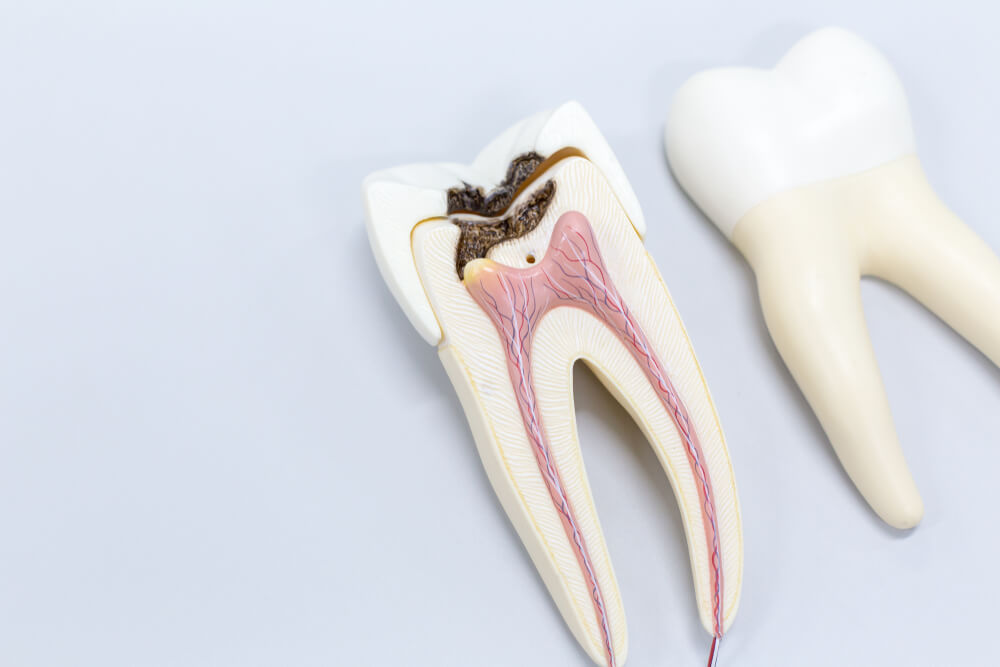Root canals are valuable dental procedures used to treat and preserve teeth with pulp infections. Dental pulp is located inside the tooth and is made up of blood vessels and nerves. When it becomes infected, this can cause pain and inflammation. Root canal therapy involves drilling into the tooth and removing all traces of infection or decay from inside the pulp chamber and root canal system.
Did You Know?
The tooth’s nerve is removed during a root canal. Once your tooth has erupted, the nerve is only responsible for feeling temperature and is not important for the natural function of your tooth. Simply stated, removing the tooth’s nerve won’t change how your tooth works.
Frequently Asked Questions:
Do I need a root canal?
If you are diagnosed with a pulp infection, then you will need a root canal. Symptoms of a pulp infection can include:
- Pain in the tooth or face
- Swelling in the gum around the tooth
- Tooth discoloration (you may notice that your tooth is turning a darker shade)
It is important to visit Dr. Dickey of Dickey Dental as soon as you start to experience signs of a pulp infection. If left untreated, bacteria will continue attacking the pulp tissue until it dies completely and needs extraction; which is why getting a root canal can be a much better option for your tooth.
What can I expect when having a root canal at Dickey Dental?
When having a root canal at Dickey Dental, he will prepare the tooth for treatment by applying a local anesthetic to keep you comfortable. He will then drill a small access hole into the side or top of your tooth to reach the pulp chamber. The next step is removing all of the diseased pulp from inside your tooth. After removing all of the pulp from your tooth, Dr. Dickey will clean out any infected tissue and try to remove all bacteria from your tooth root canal system. He will also flush the inside of the pulp chamber and root canals with an antimicrobial solution to minimize the risk of future infection.
Once all the infected tissue has been removed and the tooth has been flushed out, then Dr. Dickey will start to restore the tooth. This is done by filling the tooth with a biocompatible filling material, sealing the access hole, and then restoring the tooth with a crown. After a root canal, a temporary crown will be placed. Once your tooth has healed, then you can return to be fitted for a permanent crown.
What can I expect after having a root canal done at Dickey Dental?
After having your root canal, you will experience some mild discomfort that can be relieved with pain medication, but this is only temporary until the inflammation from the infection subsides. You may also have some pressure sensitivity in the tooth where your root canal was done, but this will slowly fade over time. You will be able to brush and floss immediately after your procedure and it is recommended to practice good oral hygiene to prevent the need for future root canals.


